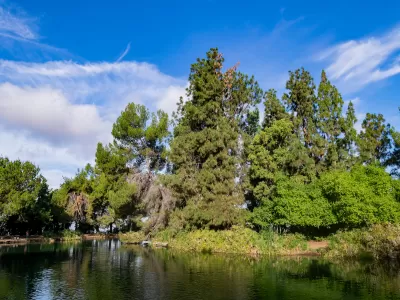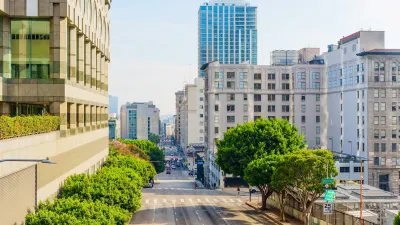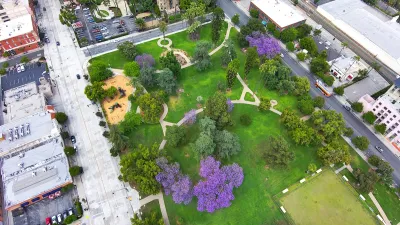Ary Amaya, a UCLA graduate student, leads an Indigenous-led reforestation effort in Los Angeles, integrating cultural practices and ecological restoration across 27 acres to promote Indigenous sovereignty and sustainable land management.

Ary Amaya, a graduate student at UCLA, is at the forefront of an Indigenous-led reforestation effort in Los Angeles. Standing amidst a landscape she has helped restore, Amaya explains the cultural and ecological importance of the native trees and plants that make up a "food forest." As reported by Madeline Adamo, this project is part of the Chief Ya’anna Regenerative Learning Village, a 12-acre area dedicated to the Gabrielino-Shoshone Nation of Southern California.
Central to this reforestation initiative is the Anawakalmekak International University Preparatory of North America, a community-based charter school that serves Indigenous students from across the Americas. Amaya, who has been an educator at the school since 2021, integrates Indigenous knowledge systems into the scientific curriculum, drawing from her own heritage and upbringing in Nayarit, Mexico. Her dual roles at UCLA and Anawakalmekak allow her to bridge academic research and community engagement.
Amaya's efforts extend to Ernest E. Debs Regional Park, bringing the total reforested area to 27 acres. She mentors a group of high school students, the "Ketsal Youth Research Scientists," who conduct ground observations and remote sensing to study the ecological impact of their work. This hands-on approach not only educates the youth but also reaffirms the importance of Indigenous sovereignty and self-determination in ecological restoration.
Supported by her graduate advisor, Elsa Ordway, and collaborating with Gabrielle Crowe and Minnie Ferguson, Amaya's work underscores the value of integrating Indigenous perspectives into environmental science. This initiative aligns with UCLA's broader commitment to inclusive excellence and community engagement, aiming to elevate Indigenous knowledge and voices in both academic and local contexts.
FULL STORY: Ary Amaya is 27 acres into an Indigenous-led reforestation of L.A. She’s far from done

Trump Administration Could Effectively End Housing Voucher Program
Federal officials are eyeing major cuts to the Section 8 program that helps millions of low-income households pay rent.

Planetizen Federal Action Tracker
A weekly monitor of how Trump’s orders and actions are impacting planners and planning in America.

Ken Jennings Launches Transit Web Series
The Jeopardy champ wants you to ride public transit.

California Invests Additional $5M in Electric School Buses
The state wants to electrify all of its school bus fleets by 2035.

Austin Launches $2M Homelessness Prevention Fund
A new grant program from the city’s Homeless Strategy Office will fund rental assistance and supportive services.

Alabama School Forestry Initiative Brings Trees to Schoolyards
Trees can improve physical and mental health for students and commnity members.
Urban Design for Planners 1: Software Tools
This six-course series explores essential urban design concepts using open source software and equips planners with the tools they need to participate fully in the urban design process.
Planning for Universal Design
Learn the tools for implementing Universal Design in planning regulations.
Ada County Highway District
Clanton & Associates, Inc.
Jessamine County Fiscal Court
Institute for Housing and Urban Development Studies (IHS)
City of Grandview
Harvard GSD Executive Education
Toledo-Lucas County Plan Commissions
Salt Lake City
NYU Wagner Graduate School of Public Service





























